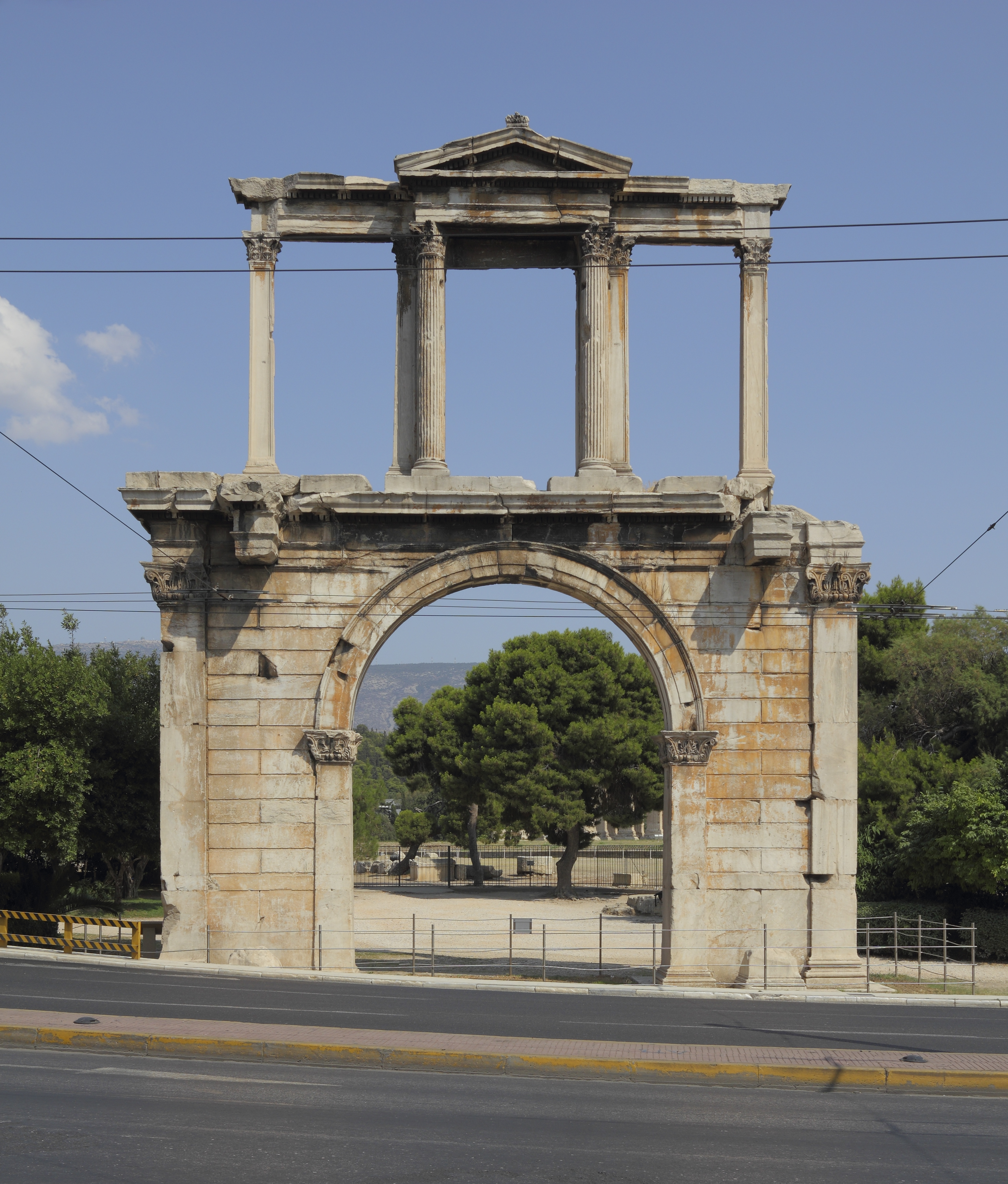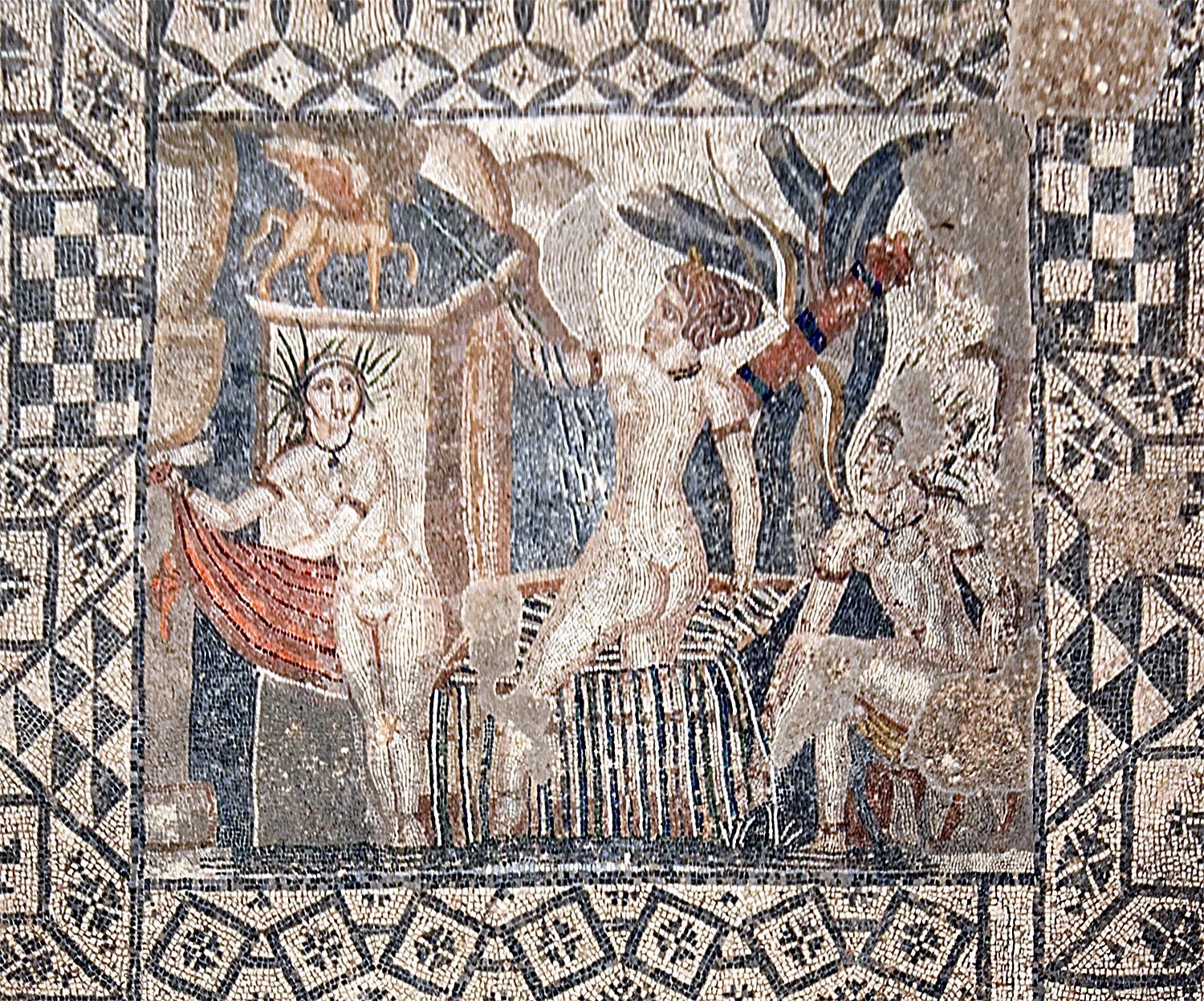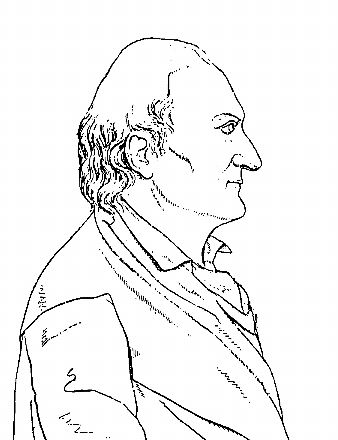|
Aequum
Aequum was a Roman colony located near modern-day Čitluk, Sinj, Čitluk, a village near Sinj, Croatia. It was founded by the emperor Claudius sometime after AD 45 and settled with the veterans of Legio VII Claudia Pia Fidelis. Location The valley of the middle part of the Cetina river and its surrounding area, known as the District of Cetina, represent the backbone of the entire area and separate geographical region of mountainous Dalmatian hinterland. Its stream flows through dry karst fields covered by sub-Mediterranean vegetation where many archaeological remains are preserved. Modern day Čitluk is situated near the town Sinj at the edge of the Cetina valley. History and significance During the Roman administration in the mid-first century AD, Aequum reached the status of an agrarian Roman colony after it was settled by the veterans of Legio VII Claudia Pia Fidelis during the rule of emperor Claudius (41–45 AD). The Colonia (Roman), colonia was founded by Claudius and name ... [...More Info...] [...Related Items...] OR: [Wikipedia] [Google] [Baidu] |
Čitluk, Sinj
Čitluk is a village situated north of the town of Sinj, Split-Dalmatia County, Croatia, and is one of the settlement (Croatia), settlements within the municipality. In 2021, its population was 462. Geography Čitluk is nestled between the Cetina River and the neighboring villages of Hrvace, Karakašica, Jasensko, and Glavice, Croatia, Glavice. Its territory stretches out over the hills and valleys, and follows the boundary of the Hrvatačko polje. Lying directly opposite the river is the village of Bajagić, Croatia, Bajagić. History The location of modern-day Čitluk was occupied by the Roman settlement known as Aequum, Colonia Claudia Aequum. Its origins date to the 1st century, potentially as early as Emperor Augustus's rule, but certainly by Emperor Claudius's era. It held the status of an ''oppidum, oppidum civium Romanorum'', signifying a settlement of Roman citizens. Among the many valuable items unearthed there, a statue of Hecate and a sculpted head of Heracles are espec ... [...More Info...] [...Related Items...] OR: [Wikipedia] [Google] [Baidu] |
Sinj
Sinj () is a List of cities and towns in Croatia, town in the continental part of Split-Dalmatia County, Croatia. As of the 2021 Croatian census, 2021 census, the population was 23,500 people, of which 10,800 inhabited its urban core. Sinj is known for a knights' tournament of Sinjska alka, which has been held since the beginning of the 18th century as a sign of victory over the Ottoman Empire, and for the shrine of Our Lady of Sinj. The urban center of Sinj is a Register of Cultural Goods of Croatia, protected cultural heritage site. Geography Sinj is located in Dalmatia, in the region historically known as ''Cetinska Krajina'', a group of settlements situated around a fertile karstic field of Sinjsko Polje (300 m AMSL), once shaped by the flood waters of the Cetina river. The field lies between the mountains of Svilaja (1508 m), Dinara (1913 m), Kamešnica (mountain), Kamešnica (1855 m) and Visoka (mountain), Visoka (890 m). Further south, the mountain Mosor (1339 m) separat ... [...More Info...] [...Related Items...] OR: [Wikipedia] [Google] [Baidu] |
Sextus Julius Severus
Gnaeus Minicius Faustinus Sextus Julius Severus was an accomplished Roman general of the 2nd century. He also held the office of suffect consul in the last three months of 127 with Lucius Aemilius Juncus as his colleague. Biography Julius Severus was born in the Province of Dalmatia, Colonia Claudia Aequum, today Čitluk, a small village in what is now Croatia. He served as governor of Moesia; he was appointed governor of Britain around 131. In 133 and to circa 135, he was transferred to 14th legate of Judaea, to help suppress the Bar Kokhba revolt there. Because of his military reputation, historians have seen him as a troubleshooter, sent to troublesome provinces to bring peace through war and his presence has been taken as indication of unrest in Britain at the time. There is no archaeological evidence to suggest fighting in Britain under his governorship, although a reference by the orator Fronto to many soldiers dying in Britain under Hadrian Hadrian ( ; ... [...More Info...] [...Related Items...] OR: [Wikipedia] [Google] [Baidu] |
Jewish Diaspora
The Jewish diaspora ( ), alternatively the dispersion ( ) or the exile ( ; ), consists of Jews who reside outside of the Land of Israel. Historically, it refers to the expansive scattering of the Israelites out of their homeland in the Southern Levant and their subsequent settlement in other parts of the world, which gave rise to the various Jewish communities. In the Hebrew Bible, the term () denotes the fate of the Twelve Tribes of Israel over the course of two major exilic events in ancient Israel and Judah: the Assyrian captivity, which occurred after the Kingdom of Israel (Samaria), Kingdom of Israel was conquered by the Neo-Assyrian Empire in the 8th century BCE; and the Babylonian captivity, which occurred after the Kingdom of Judah was conquered by the Neo-Babylonian Empire in the 6th century BCE. While those who were taken from Israel dispersed as the Ten Lost Tribes, those who were taken from Judah—consisting of the Tribe of Judah and the Tribe of Benjamin—becam ... [...More Info...] [...Related Items...] OR: [Wikipedia] [Google] [Baidu] |
Bar Kokhba Revolt
The Bar Kokhba revolt (132–136 AD) was a major uprising by the Jews of Judaea (Roman province), Judaea against the Roman Empire, marking the final and most devastating of the Jewish–Roman wars. Led by Simon bar Kokhba, the rebels succeeded in establishing an independent Jewish state that lasted for several years. The revolt was ultimately crushed by the Romans, resulting in the near-depopulation of Judea through large-scale killings, mass enslavement, and the displacement of many Jews from the region. Resentment toward Roman rule in Judaea and nationalistic aspirations remained high following the destruction of Jerusalem during the First Jewish–Roman War, First Jewish Revolt in 70 AD. The immediate triggers of the Bar Kokhba revolt included Emperor Hadrian's decision to build ''Aelia Capitolina''—a Colonia (Roman), Roman colony dedicated to Jupiter (god), Jupiter—on the ruins of Jerusalem, extinguishing hopes for the Temple's reconstruction, as well as a possible ban o ... [...More Info...] [...Related Items...] OR: [Wikipedia] [Google] [Baidu] |
Hadrian
Hadrian ( ; ; 24 January 76 – 10 July 138) was Roman emperor from 117 to 138. Hadrian was born in Italica, close to modern Seville in Spain, an Italic peoples, Italic settlement in Hispania Baetica; his branch of the Aelia gens, Aelia ''gens'', the ''Aeli Hadriani'', came from the town of Atri, Abruzzo, Hadria in eastern Italy. He was a member of the Nerva–Antonine dynasty. Early in his political career, Hadrian married Vibia Sabina, grandniece of the ruling emperor, Trajan, and his second cousin once removed. The marriage and Hadrian's later succession as emperor were probably promoted by Trajan's wife Pompeia Plotina. Soon after his own succession, Hadrian had four leading senators unlawfully put to death, probably because they seemed to threaten the security of his reign; this earned him the senate's lifelong enmity. He earned further disapproval by abandoning Trajan's expansionist policies and territorial gains in Mesopotamia (Roman province), Mesopotamia, Assyria ( ... [...More Info...] [...Related Items...] OR: [Wikipedia] [Google] [Baidu] |
Cassius Dio
Lucius Cassius Dio (), also known as Dio Cassius ( ), was a Roman historian and senator of maternal Greek origin. He published 80 volumes of the history of ancient Rome, beginning with the arrival of Aeneas in Italy. The volumes documented the subsequent founding of Rome (753 BC), the formation of the Republic (509 BC), and the creation of the Empire (27 BC) up until 229 AD, during the reign of Severus Alexander. Written in Koine Greek over 22 years, Dio's work covers approximately 1,000 years of history. Many of his books have survived intact, alongside summaries edited by later authors such as Xiphilinus, a Byzantine monk of the 11th century, and Zonaras, a Byzantine chronicler of the 12th century. Biography Lucius Cassius Dio was the son of Cassius Apronianus, a Roman senator and member of the Cassia gens, who was born and raised at Nicaea in Bithynia. Byzantine tradition maintains that Dio's mother was the daughter or sister of the Greek orator and philosopher, ... [...More Info...] [...Related Items...] OR: [Wikipedia] [Google] [Baidu] |
Roman Britain
Roman Britain was the territory that became the Roman province of ''Britannia'' after the Roman conquest of Britain, consisting of a large part of the island of Great Britain. The occupation lasted from AD 43 to AD 410. Julius Caesar invaded Britain in 55 and 54 BC as part of his Gallic Wars. According to Caesar, the Britons had been overrun or culturally assimilated by the Belgae during the British Iron Age and had been aiding Caesar's enemies. The Belgae were the only Celtic tribe to cross the sea into Britain, for to all other Celtic tribes this land was unknown. He received tribute, installed the friendly king Mandubracius over the Trinovantes, and returned to Gaul. Planned invasions under Augustus were called off in 34, 27, and 25 BC. In 40 AD, Caligula assembled 200,000 men at the Channel on the continent, only to have them gather seashells () according to Suetonius, perhaps as a symbolic gesture to proclaim Caligula's victory over th ... [...More Info...] [...Related Items...] OR: [Wikipedia] [Google] [Baidu] |
Moesia
Moesia (; Latin: ''Moesia''; ) was an ancient region and later Roman province situated in the Balkans south of the Danube River. As a Roman domain Moesia was administered at first by the governor of Noricum as 'Civitates of Moesia and Triballia'. It included most of the territory of modern eastern Serbia, Kosovo, north-eastern Albania, northern parts of North Macedonia (Moesia Superior), Northern Bulgaria, Romanian Dobruja and small parts of Southern Ukraine (Moesia Inferior). Geography In ancient geographical sources, Moesia was bounded to the south by the Haemus (Balkan Mountains) and Scardus (Šar) mountains, to the west by the Drinus (Drina) river, on the north by the Donaris (Danube) and on the east by the Euxine (Black Sea). History The region of Moesia was inhabited chiefly by Thracian, Illyrian, and Thraco-Illyrian peoples. The name of the region comes from Moesi, the Latin name of a Thracian tribe who lived there before the Roman conquest. Parts of Moes ... [...More Info...] [...Related Items...] OR: [Wikipedia] [Google] [Baidu] |
Diana Lucifera
Diana is a goddess in Roman religion, primarily considered a patroness of the countryside and nature, hunters, wildlife, childbirth, crossroads, the night, and the Moon. She is equated with the Greek goddess Artemis, and absorbed much of Artemis' mythology early in Roman history, including a birth on the island of Delos to parents Jupiter and Latona, and a twin brother, Apollo,''Larousse Desk Reference Encyclopedia'', The Book People, Haydock, 1995, p. 215. though she had an independent origin in Italy. Diana is considered a virgin goddess and protector of childbirth. Historically, Diana made up a triad with two other Roman deities: Egeria the water nymph, her servant and assistant midwife; and Virbius, the woodland god. Diana is revered in modern neopagan religions including Roman neopaganism, Stregheria, and Wicca. In the ancient, medieval, and modern periods, Diana has been considered a triple deity, merged with a goddess of the moon (Luna/Selene) and the underworld ... [...More Info...] [...Related Items...] OR: [Wikipedia] [Google] [Baidu] |
Alberto Fortis
Alberto Fortis (9 or 11 November 1741 – 21 October 1803) was an Italian writer, naturalist and cartographer, citizen of Republic of Venice. Life His real name was Giovanni Battista Fortis (his religious name was ''Alberto'') and he was born in Padua on either 9 or 11 November 1741. He journeyed extensively in Venetian Dalmatia. His best-known work is ''Viaggio in Dalmazia'' (Journey to Dalmatia), originally published in 1774 and first published in London in 1778. The highlight of the book is the description of Morlachia, a historical region currently located in Croatia named after the Morlachs that inhabited the region. In his book, Fortis presented his literary discovery "Hasanaginica" as a Morlach (Vlach) ballad. Larry Wolff believed Fortis wrote the ballad as a poetry of South Slavs rather than a poetry of the Morlachs. Fortis believed that the Morlachs preserved their old customs and clothes. Their ethnographic traits were traditional clothing, use of the gusle musical ins ... [...More Info...] [...Related Items...] OR: [Wikipedia] [Google] [Baidu] |
Hecate
Hecate ( ; ) is a goddess in ancient Greek religion and mythology, most often shown holding a pair of torches, a key, or snakes, or accompanied by dogs, and in later periods depicted as three-formed or triple-bodied. She is variously associated with crossroads, night, light, magic, witchcraft, drugs, and the Moon.Seyffert, s.vHecate/ref>d'Este, Sorita & Rankine, David, Hekate Liminal Rites, Avalonia, 2009. Her earliest appearance in literature was in Hesiod's '' Theogony'' in the 8th century BCE as a goddess of great honour with domains in sky, earth, and sea. She had popular followings amongst the witches of Thessaly, and an important sanctuary among the Carians of Asia Minor in Lagina.Burkert, p. 171. The earliest evidence for Hecate's cult comes from Selinunte, in Sicily. Hecate was one of several deities worshipped in ancient Athens as a protector of the '' oikos'' (household), alongside Zeus, Hestia, Hermes, and Apollo. In the post-Christian writings of the Chalde ... [...More Info...] [...Related Items...] OR: [Wikipedia] [Google] [Baidu] |







